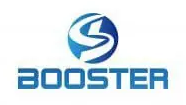So, just what is a Deep Tissue Massage?
We’re glad you asked!!! Deep Tissue Massage is arguably similar to a relaxation massage, but it is deeper in pressure because it focuses on releasing chronic muscle tension. (The deepest layers of muscle tissue, tendons, and fascia). These are made up of the protective layers around the muscles, bones, and joints. Below is a basic example of what these layers look like. So as you can see, we need to get in their nice n deep to release pain and tension in these areas.
How does it work?
When the muscles are really tense or injured there may be bands of painful stiff tissue – called adhesions or knots. These adhesions result in the following conditions.
- Reduced circulation,
- Increased pain
- Restricting movement
- Inflammation
During a Deep Tissue Massage, the therapist breaks these adhesions to reduce pain and to encourage normal movement. This is usually done either with or without oil and with the application of deep pressure. It is recommended that the client be relaxed while deep tissue treatment is taking place. This allows the therapist to reach the deeper layers of your muscles.
Ouch, sounds painful. Does it hurt?
Generally, a Deep Tissue Massage shouldn’t hurt. However, you may find some discomfort and pain during the treatment, especially if your muscles are extremely sore or stiff or if the level of pressure is outside your pain threshold. If the pressure is too intense, it will cause you to consciously or unconsciously tense up. This will make it more difficult for the therapist to treat the deeper layers of muscle. You MUST tell your therapist if the level of pressure is too intense and you want to break free. Sing out in your best Freddie Mercury voice if you like! … “God knows I want to break free!!” Lol… Yep. I’m a Queen fan. What can I say?
What techniques are used in Deep Tissue Massage?
The techniques used in deep tissue massage are usually slow and deep. A therapist can use their fingers using trigger point on certain points of the muscle.
- Trigger Points are sensitive areas of the body or stimulation which result in particular outcomes in other areas. This could be a tender area in a muscle causing pain when they are overworked. hands, forearms, and elbows (again to use as trigger points on certain points of the muscle).
- Myofascial Release – This involves applying a gentle and supportive pressure into the connective tissues to rid them of pain and to encourage unrestricted movement.
- Cross Fiber Friction (a technique that helps break down knots which occur during injuries, tears, breaks or sprains), (Deep tissue technique clip could be placed here).
Will I be sore after afterward?
There may be some stiffness or pain after the massage. This is normal and it usually goes away within a few days. Your therapist may tell you to place an ice pack on the sore areas and to stretch them. At Swift Results Massage Therapy we would recommend a Deep Tissue Massage if;
- a) You are experiencing long term stiffness or soreness
- b) You have a higher pain threshold
- c) You receive regular Deep Tissue or Remedial Massages.
- d) You are new to massage (If you are new to massage we would recommend a light Massage or a lighter Remedial Massage).
(A video clip of some stretches could be inserted here)
What are the benefits of Deep Tissue Massage?
Generally, Deep Tissue Massage focuses on a specific problem. This could be, for example, a long term injury with pain, injury rehabilitation, and lower back pain. It is also beneficial to treat the following symptoms:
- Restricted mobility
- Repetitive Strain Injury (RSI)
- Problems relating to posture
Muscle Tension – This includes the following areas.
- a) Hamstrings (upper back parts of the legs)
- b) Glutes (muscles of the buttocks, yes there are muscles in your buttocks!!)
- c) IT band (a band down the side of upper legs. These muscles start near the hip and wrap themselves around the knee.)
- d) Quadriceps ( the group of muscles at the front of your upper legs).
- e) Rhomboids ( a group of muscles in the upper back)
f) The upper back in general.
- Osteoarthritis pain (the pain resulting in the wear and tear of your joints. As a result of your bones rubbing together. This causes joint inflammation.)
- Sciatica (pain in the lower parts of your body. It is felt from the lower back from behind the thigh. The pain can also be felt behind the knee.)
- Piriformis Syndrome (is when the Piriformis muscle in your buttocks area spasms and causes pain in that area. It can also aggravate the sciatic nerve causing pain, numbness and tingling down the back of the leg and into the foot- quite like sciatic pain.)
- Tennis Elbow (the outside of the elbow becomes sore and the forearms become damaged as a result of overuse and repetitive movement).
- Fibromyalgia (a condition that causes you to become lethargic and to have sore muscles. People with this condition are sore and tender throughout their bodies).
- Muscle tension or spasm
- After a workout or bodybuilding
THESE GUYS WOULD DEFINITELY BENEFIT FROM A DEEP TISSUE MASSAGE AFTER THEIR BEACH RUN!!! A DEEP TISSUE MASSAGE CAN HELP TREAT ALL OF THAT OMG! I HAD NO IDEA!
Lol. Yes a Deep Tissue can be an amazing type of massage to have done especially if you are experiencing one or more of the above conditions.
Although a Deep Tissue Massage is not for everyone, we have many clients who prefer this deeper, more intense type of massage. After experiencing regular Deep Tissue Massages they feel that, for them, this is the one that does the trick.
At Swift Results Massage Therapy we would suggest to any clients considering Deep Tissue Massage for the first time to fill out the pre-massage paperwork and describe to your therapist any condition which may preclude you from Deep Tissue Massage, as there are many instances when a Deep Tissue Massage may not be suitable.
Really? Do tell.
There are many instances where Deep Tissue massage may not be advisable. Here are some of them. Ok here goes:
- Pregnancy. Ladies, If you are pregnant, CONGRATULATIONS! However, you might want to avoid this type of massage as strong pressure will be applied. Certain areas should not have firm pressure applied such as legs, pelvic areas, wrists, hands, and ankles. The reason being is that while you are pregnant you are at higher risk of blood clots, and Deep Tissue Massage (especially on the legs) may cause a blood clot resulting in a serious health risk. But don’t despair ladies!! You can still have a Pregnancy Massage which is specially designed for the precious needs of Mums-To-Be. This should be done by a qualified Prenatal Therapist. Talk to them about your specific needs, soreness, morning sickness where you would like massaged etc. Feel free to talk about the amount of pressure that is safe for you. Your Prenatal Therapist will only be too happy to help! It may be recommended that you take along medical documentation from your doctor confirming your symptoms and the type of massage you are able to receive.
- Atherosclerosis – This occurs when there is a build-up of plaque in your artery walls. Care needs to be given so that blood clots are not moved as a result of treatment.
- Arteriosclerosis – (hardened arteries). Caution is required as high blood pressure could be present. No Deep Tissue Treatment is advised in the advanced stages. Ask your doctor to give you medical clearance for your work if you are taking medication for circulatory issues.
- Autoimmune diseases. These result when the Immune System accidentally attacks its own cells, tissues, and organs, resulting in inflammation and damage. Your therapist will not work on critically inflamed tissues. Different types of autoimmune diseases include:
- a) Lupus – occurs when your immune system attacks the connective tissue. This would normally be the skin, kidneys, joints, and heart. A deep tissue massage would be unsafe during acute flares.
- b) Rheumatoid Arthritis – is when your immune system attacks your joints, and its associated muscles, tendons, ligaments and blood vessels; receiving a Deep tissue massage would be dangerous during the inflammatory stage.
- c) Scleroderma or hardened skin – is a build-up of collagen fibers around your organs (problems with absorption when around the small intestines) and in the second layer of your skin called the dermis; when this occurs there is an increased stiffness in your joints along with muscle weakness. Not a great idea to receive a deep tissue massage when inflamed.
- d) Ankylosing spondylitis – is inflammation of the tissues around your spine. This causes the connective tissues of the sacrum (the wedge-shaped vertebra at the lower end of the spine. This forms a base of the spinal column and is in conjunction with your hip bones to form the pelvis.) And spine to solidify. Your Therapist should not work on areas of pain and inflammation in serious or acute episodes.
- Bipolar Disorder (manic depressive) if you have Bipolar a deep tissue massage may increase mood your swings.
- Epilepsy– If you have epilepsy a Deep Tissue Massage may bring on hyperventilation due to the deep pressure of the techniques.
- Extreme High Blood Pressure. You should avoid receiving a deep tissue treatment as it could heighten your condition.
Wow there are a lot of reasons why you shouldn’t get a Deep Tissue Massage
Yes, there are. Deep Tissue treatments aren’t for everybody. If you do have one of the above-mentioned conditions a softer style of massage or a relaxation massage may be more suitable for you. Please consult your doctor if you are unsure about what kind of massage you are able to receive.
We hope we have made sense of Deep Tissue Massage for you . . .
If you would like to try out Deep Tissue Massage, do shop our range over here.



